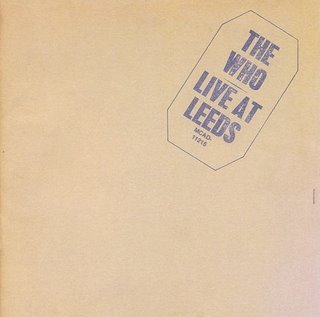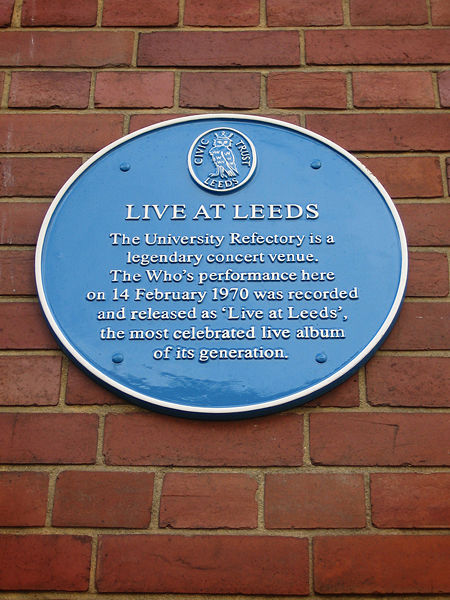
A Discreet Cover For An Explosive Album
As successful as Tommy would prove to be for The Who, it would also prove to bring about a series of difficulties that were to undermine the band, the way it saw itself, and the way the audience saw it. The problem with the famed rock opera was that the sound of the record was not even remotely reminiscent of the way The Who sounded on stage, and since many people discovered them through Tommy they had no idea of the volume and electricity the band generated when playing live. How could they address that situation and make newcomers realize how they really sounded, and show their old fans that they were as demolishing as ever? The answer was to be named “Live At Leeds”, and nowadays any fan of rock & roll knows the words. They are inscribed into the collective soul of rockers, and into the cognition of those who have experienced music in its purest form.
“Leeds” found the different band members at the point in which they realized The Who was to be what they were to do for the rest of their lives. Not because they were making a substantial income, but because they had found something they truly excelled at, and something that truly inspired others to do their best.
The original album was released in 1970. It featured 6 songs. These included some early rock & roll covers, and some Who classics that were mostly expanded (“My Generation” clocks at almost 15’, and “Magic Bus” is twice longer than the studio cut – not to mention aurally explosive in every sense). The album omits Tommy completely – there is just a brief “See Me, Feel Me” interpolation during the “My Generation” jam, but that is it

Then, a CD resissue surfaced in 1995, commemorating the 30th anniversary of the Shepherd Bush’s boys as a band. That release had 14 songs, including a fair share of early Who classics (“I’m A Boy”, “Happy Jack”, a thrilling “A Quick One”) along with a superb booklet. It goes without saying that the sound quality itself was taken care of, and that the crackling noises that plagued the original vinyl (and which were so noticeable the album came with a sticker saying they were not a fault of your record player) have vanished in thin air. If I am not mistaken, this was the CD that marked the commencement of the remastered albums which were to surface between 1994 and 1997. And the CD also featured a lot of stage banter, spotlighting the wit of Pete and the irreverence of Keith bar none.
Finally, a deluxe 2 CD set was released in 2001. It included the entire concert, only that the Tommy numbers were moved into a separate disc, disrupting the original flow. And something that I did not like about this 2 CD set was the fact that Daltrey overdubbed far too many vocals. The 1995 disc had some overdubs, granted, but the difference became noticeable on the 2 CD set. From what I have just said, you can tell that my money is on the 1995 rerelease (that is, the single CD).
I felt it was important going through the different incarnations of the album. But in each and every case (notwithstanding the differences in length, track listing and faithfulness to the original performance) the same message is put across: The Who were at the top of the game after the extensive Tommy tours. Other contemporary live records prove it.
Ultimately, “Live At Leeds” acts as a reminder of the role the band was to occupy in history, and as an incontestable definition of them not only onstage but also in every walk of life: a sort of brute force that enshrined the biggest elegance and intellect you could come across in the music scene. In that sense, “Live At Leeds” is an outright triumph. And making it your very first Who purchase is an excellent way of getting acquainted with them.
Rating: 9/10

Pingback: Who’s Next (The Who) – Album Review (Part 2) | MusicKO
Pingback: Live At The Isle Of Wight (The Who) – Album Review | MusicKO
Pingback: The Kids Are Alright (The Who) – Original Soundtrack Album | MusicKO
Pingback: The Blues To The Bush (The Who) – Album Review | MusicKO